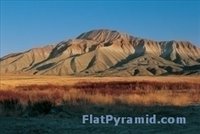3D Models For Use In Geological Modeling
Geological modeling serves the purpose of creating 3D models of sections of the earths crust. These 3D models are unique as they can be created with different types of simulations of rocks, even the types of cells within the rocks. 3D models allow seismologists to predict certain events within the crust of the earth from shifting plates to eroding areas of the crust, or new growth within certain areas.
The grid surfaces within the programs are created with diverse polygons representing different structures and types of surfaces. These geological models are created using polygonal modeling using a meshed shell to create a surface that has been triangulated for the specific area.
3D geological modeling incorporates many other aspects of the field, including; diagenesis, structural geology, paleoclimatology and sedimentology.

3D geological models are also used to complete valuable calculations for use in geostatistics. Many times, geologists are unable to calculate what is within the rock or within the crust at certain areas and therefore it is important to have software that can calculate these variables. This data is not available on regular grids and therefore must be estimated in the most effective manner.
